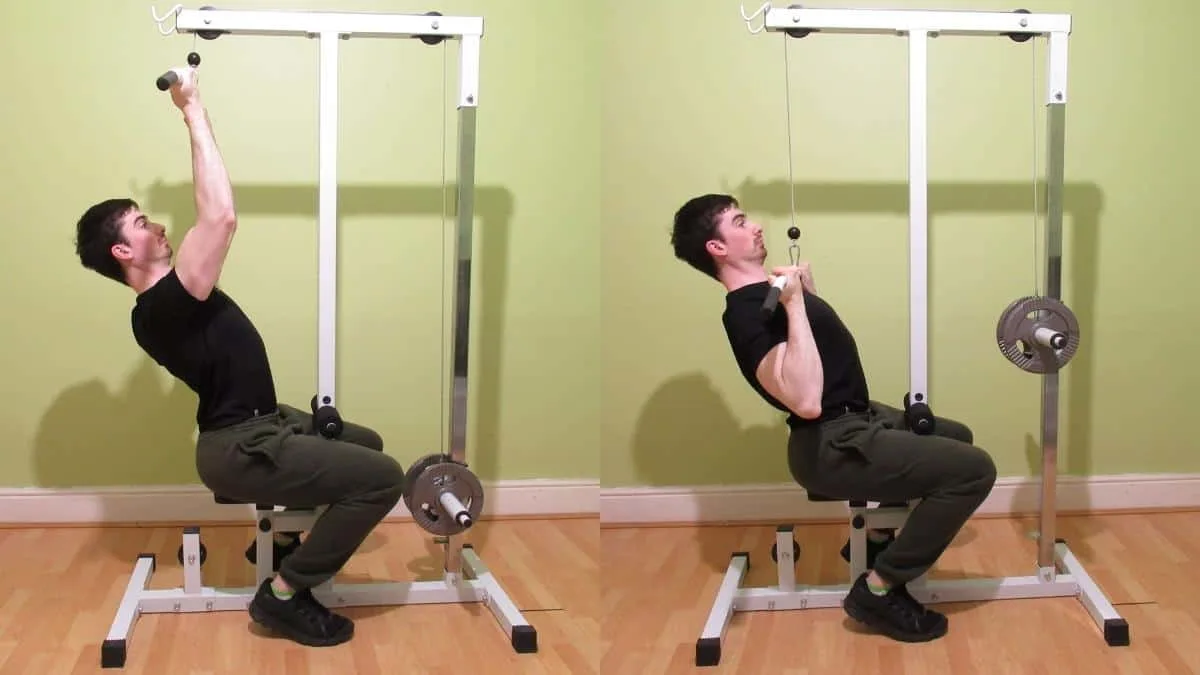If you’re wondering why you keep feeling lat pulldowns (and other back exercises) in your triceps—and want a solution to the problem—this guide is for you.
Using the human anatomy as a guide, I’ll explain why lat pulldowns will always work your triceps even if you have an impeccable mind-muscle connection with your lats.
Related: Do pull ups work your triceps?
Do lat pulldowns work your triceps?
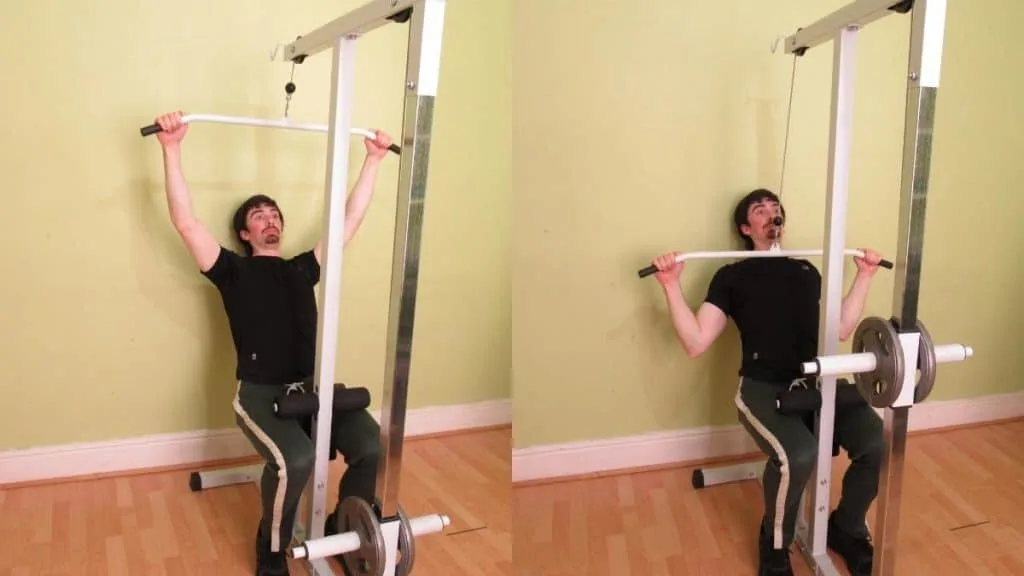
Do lat pulldowns work your triceps? Yes, lat pulldowns work the triceps muscle. Specifically, pulldowns work the long head of the triceps brachii because, like the latissimus dorsi, the long head of the triceps performs shoulder extension (bringing your arm toward your body).
Obviously, the anatomy of the lats and the triceps is set in stone. So whenever you perform any kind of shoulder extension, you’re bound to feel some tricep activation at a minimum.
So, in some respect, lat pulldowns are actually a very good tricep exercise because the long head of the triceps is an area that many lifters need to work on.
The trouble arises when you feel your triceps working more than your lats—especially if you want to isolate your back muscles.
Why do my triceps hurt during lat pulldowns?
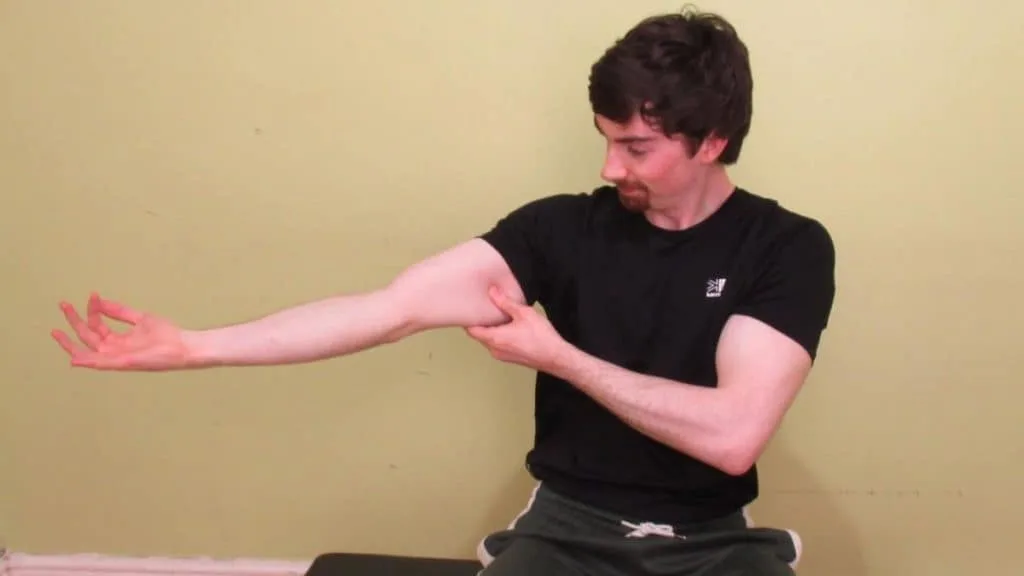
If your triceps hurt during lat pulldowns, then it’s likely for one of the following reasons (or possibly due to a combination of both).
First, you might have injured your triceps during training (perhaps without realizing it). This injury may then have become aggravated, seen as you’re now doing an exercise—pulldowns—that train the triceps.
On the other hand, you might be confusing tricep pain with tricep activation. Indeed, if you’re fairly new to lifting, then when your triceps are really pumped, it can be hard to distinguish between the natural burning sensation in the muscle and actual problematic pain.
Ultimately, if you’re pulling more with your triceps than with your lats during pulldowns, then you’ve likely found the reason for your discomfort.
Why do I feel my triceps working during straight arm lat pulldowns?
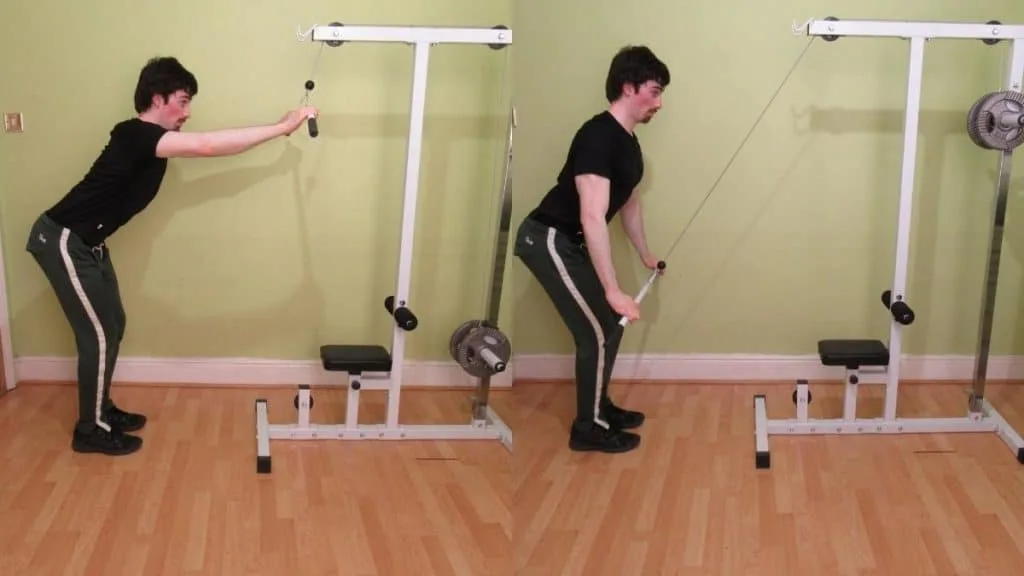
The reason that you feel your triceps working during straight arm pulldowns is that a straight arm pulldown (unlike a lat pulldown) is a pure shoulder extension exercise and the long head of the triceps is a shoulder extensor.
This means that only your shoulder extensor muscles are involved in the movement. And while you can certainly bias the activation of certain muscles by developing a strong mind-muscle connection, you can’t completely isolate particular muscles.
So, during a straight arm pulldown, the prime mover will naturally be the lats because it’s the biggest and strongest of the shoulder extensor muscles.
However, if you don’t have a great mind-muscle connection with your lats (or if you’re lifting too much weight), then your triceps, which are a very strong and fast-twitch muscle group, may start to take over.
How can I stop feeling my triceps during lat pulldowns?
Feeling lat pulldowns working your triceps more than your back is a highly frustrating experience. However, you shouldn’t just ditch the exercise because it’s certainly one of the best for building big wide lats.
Reduce the resistance
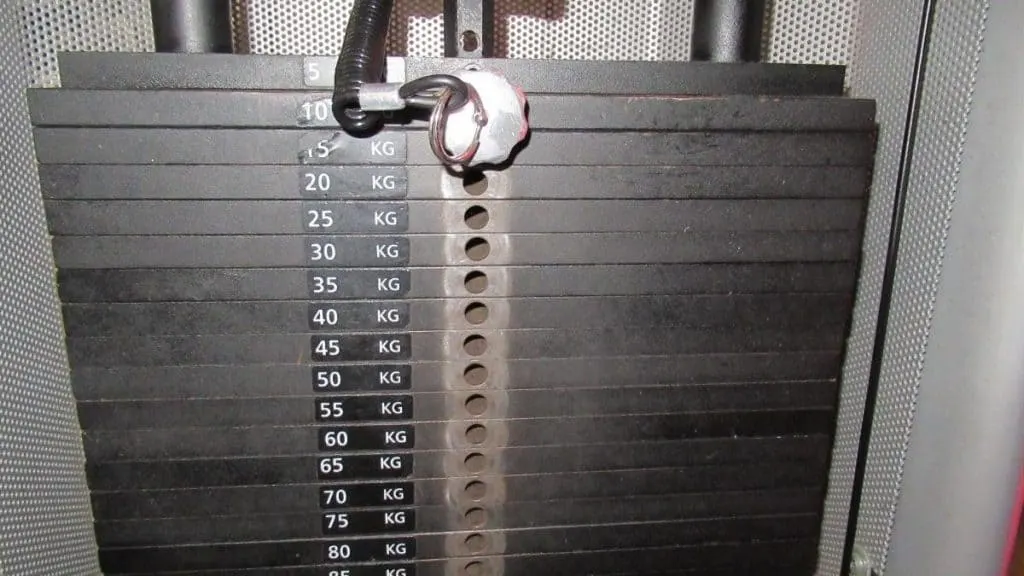
Lifting too much weight is perhaps the most common reason for feeling the lat pulldown and straight arm pulldown in your triceps. One reason for this is that the triceps are an incredibly fast-twitch muscle group.
As such, when you move the pin further down the stack and lift heavy weights, the triceps are only too happy to contribute more of their impressive strength, which is one reason why you may have a sore tricep muscle (DOMS) after your back workout.
The lats are, of course, a big and powerful muscle group in their own right. But just because they’re a big muscle doesn’t necessarily mean that you need to lift as heavy as possible.
Reducing the resistance may give you a better pump in your back because you’ll be able to put more effort into developing a strong lat mind-muscle connection rather than just focusing on heaving heavy weights.
Improve your mind-muscle connection
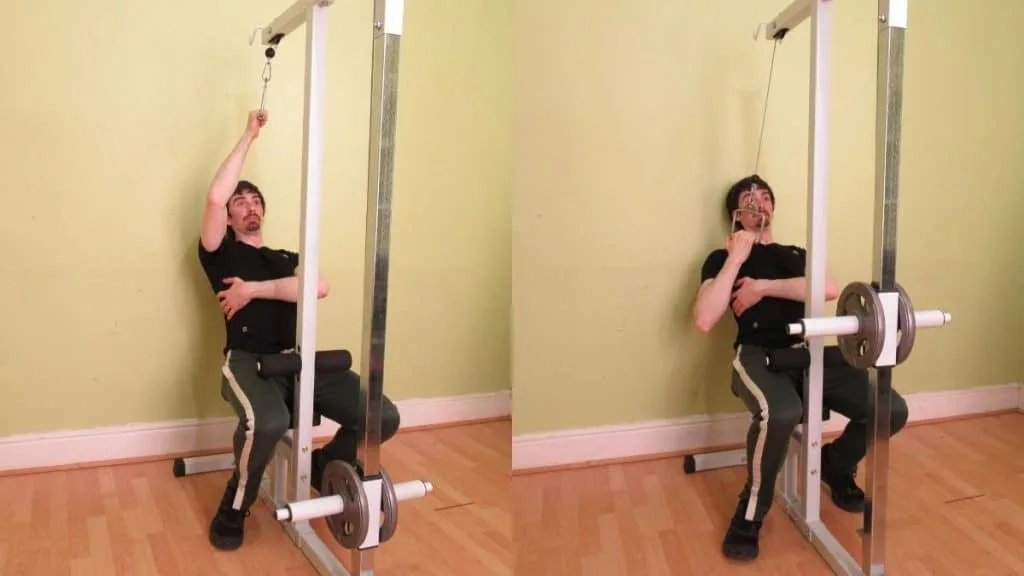
Your brain is very powerful. And although you don’t need to be a genius to get jacked, being able to focus intensely on your lats will help to ensure that your back—rather than your triceps—performs the bulk of the work.
Think about initiating every pulldown rep by squeezing your lats. It’s honestly fine to feel a small amount of tricep activation, but forcing your back muscles to contract first will do your lats the world of good.
Arching your upper back and keeping your shoulder blades pinned back will also encourage you to pull with your back rather than your triceps.
Slowing down your reps is yet another great method for getting a better lat pump (and building muscle) while decreasing tricep involvement because by decreasing your rep tempo, you’ll really force the lats to stretch.
Additionally, slowly releasing the pulldown bar will enable you to consciously focus on initiating your next rep with your back.
Finally, consider training one arm at a time (i.e., performing a unilateral lat pulldown).
Yes, training each side of your body independently will make your sessions longer, but such a training style will really enable you to give more attention to your lats, which is a great way to take your triceps more or less out of the movement.
Switch exercises
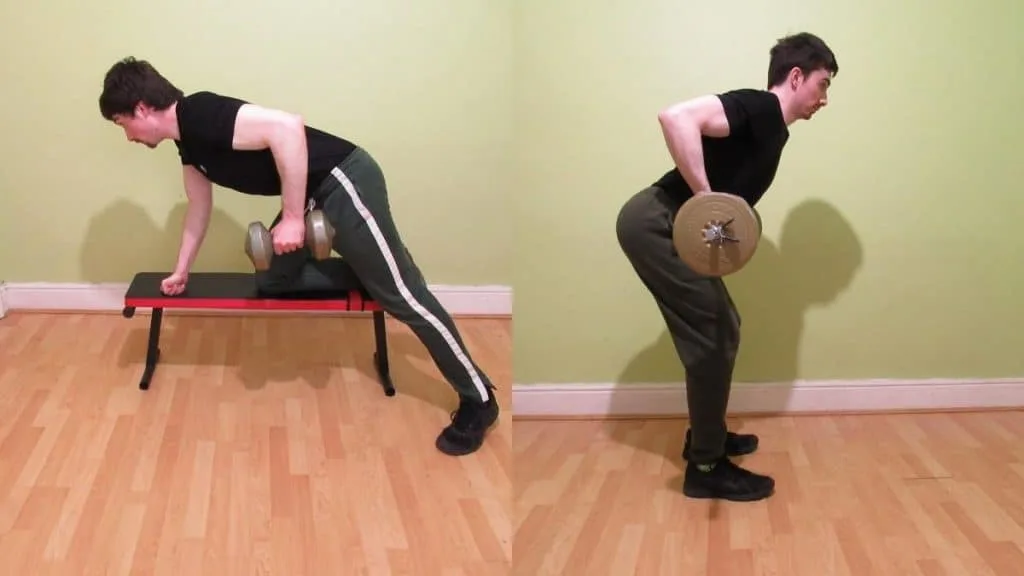
Some people just aren’t built for certain exercises. While lightening the load and improving your mind-muscle connection will go a long way to taking your triceps out of the movement, some people just don’t get a great workout from pulldowns, and that’s fine.
The good news is that you’re not doomed to a small and narrow back just because you feel your triceps taking over.
There are many other formidable back builders that you can perform to grow your lats.
Dumbbell rows, cable rows, chin-ups, pull-ups, and lat pushdowns are all supremely effective exercises for building a thick and wide back. Try some different movements in your next workout and see which gives your lats the best stretch and contraction.
What tricep exercises can you do on a lat pulldown machine?
Obviously, the lat pulldown machine was designed to train the muscles of the back. However, since a pulldown machine is essentially just a taller-than-average pulley station, you can also train your triceps with a variety of other exercises.
You can also check out the other gym machines for triceps if you want to isolate the back of your arms.
Tricep pushdowns
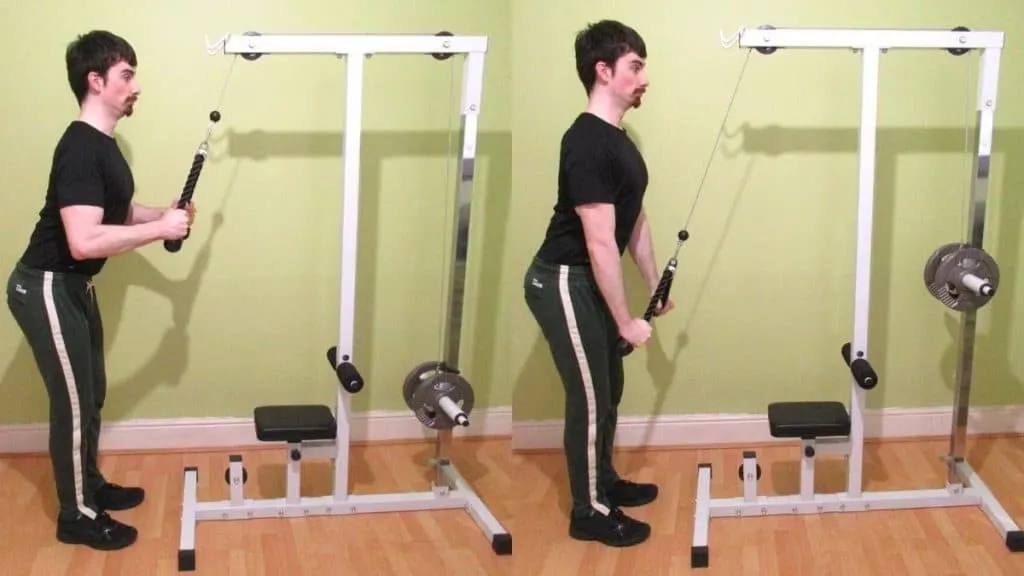
As mentioned, a pulldown station is basically a high pulley. Therefore, you can attach your desired bar to the end of the cable and perform pushdowns like you would on any other cable machine.
The difference is that, since pulldown machines are generally a bit taller than cable stations, you might feel more core activation because the resistance will get heavier sooner (since the cables have to travel further).
Also, if your gym has other cable machines but only one lat pulldown, some people might get annoyed with you if you use the pulldown station to do an exercise (i.e., pushdowns) that you can easily perform on other equipment.
Overhead extensions
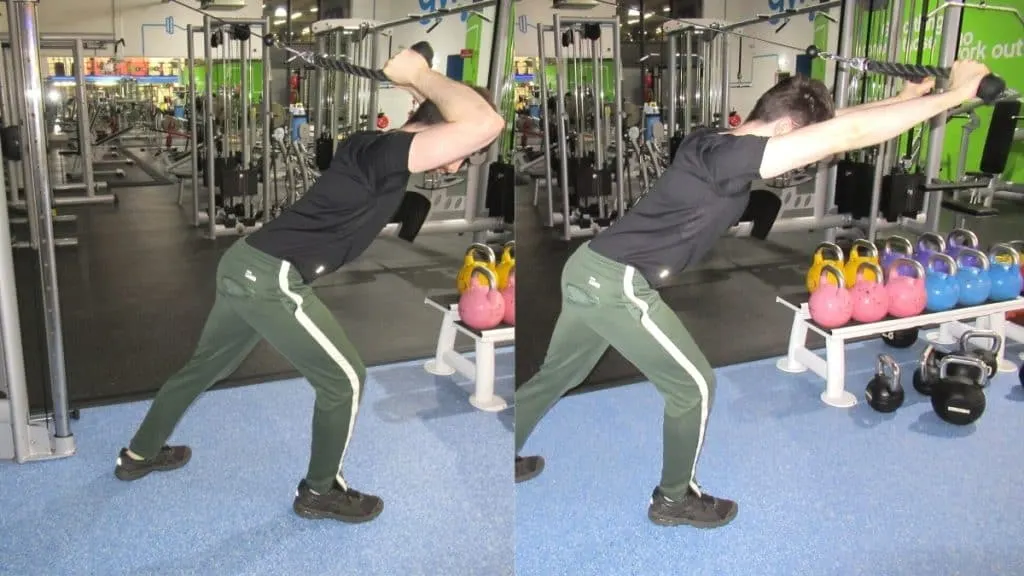
Rather than facing the pulldown station directly and doing pushdowns, you can face away from the machine and do leaning overhead extensions instead, which are a great exercise for beefing up the long head of the triceps.
The rope attachment is the best choice for this exercise because it’ll allow you to get a greater range of motion and train your triceps independently. While you’ll be able to lift more weight with a bar attachment, you’ll also risk biasing the movement to your stronger triceps muscle.
Lat pulldowns
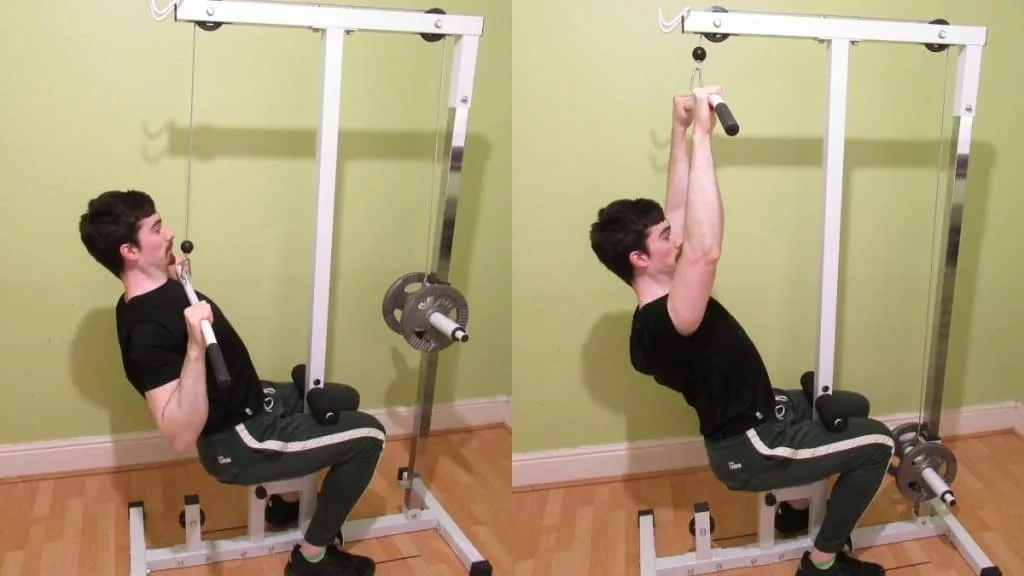
While many people want to avoid working their triceps during pulldowns, some lifters actually want to train their tris while working their back.
After all, it’s not like you can take your triceps out of the movement completely because the long head of the triceps is, by definition, a shoulder extensor (shoulder extension is the main anatomical function trained during a pulldown).
This is one reason why many lifters do a back and tricep workout routine—if your tris are going to get worked while training your back, then why not just purposely train both muscles in the same session?
Additionally, since the long head of the triceps is the single biggest muscle in your upper arms, you may want to take every opportunity that you can to train it.
Lat pulldown to tricep extension
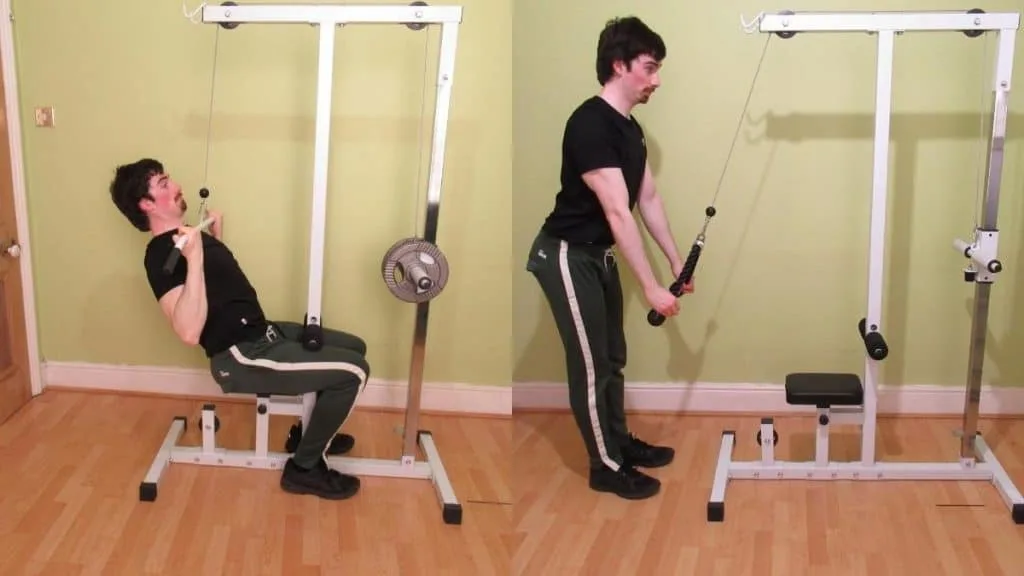
If you want to build your back and train your triceps while saving valuable gym time, then the lat pulldown to tricep extension is an excellent superset to perform.
You begin by doing pulldowns and then immediately move into a tricep extension (which can be either a pushdown or an overhead extension).
The only downside of this pairing is that blasting your triceps with an isolation exercise will naturally decrease their force output potential, which may make you slightly weaker on your next sets of pulldowns.
On the contrary, some people might find that purposely fatiguing their triceps enables them to prioritize their back muscles during pulldowns. So like many things in fitness, there’s no one-size-fits-all approach to building your back.
Conclusion: How to stop feeling your triceps during lat pulldowns
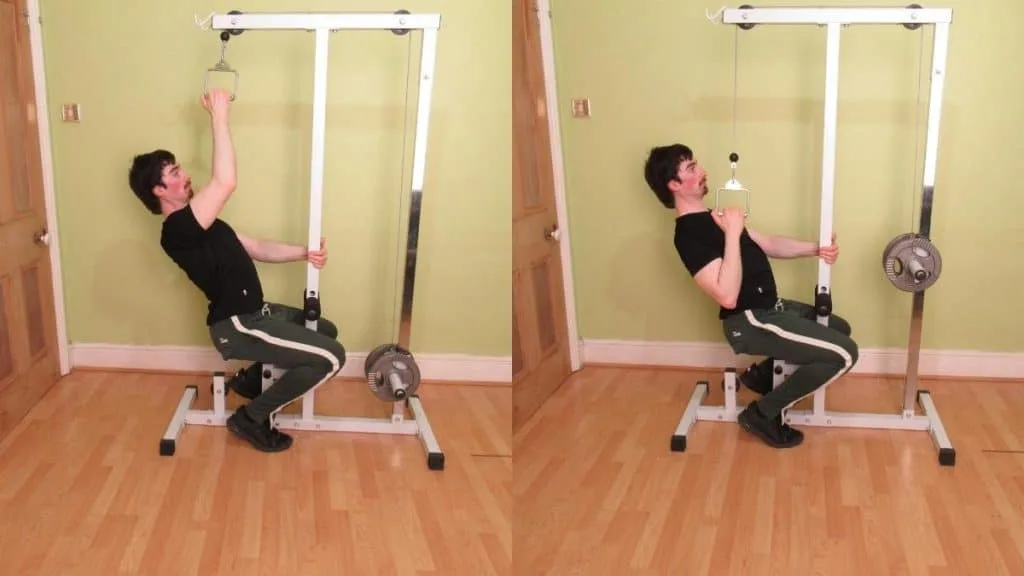
You’ve seen various lat pulldown triceps exercises and learned how to effectively reduce your tricep activation during the lat pulldown, so what are the key takeaways?
First, mind-muscle connection. If there’s one thing that will drastically improve your results—especially with lagging muscle groups—it’s establishing a solid mind-muscle connection.
By feeling your lats more than your triceps, you’ll be able to get great gains without increasing the resistance because there will be more tension on your back muscles (of course, you should aim to up the weight as your back naturally becomes stronger).
Keeping your upper back arched and your shoulder blades pinned back is the second-best tip for reducing tricep involvement because you’ll be priming your body to pull with the lats rather than the triceps. In other words, you’ll be putting your lats in a stronger line of pull.
References
- Bailey, A. (2022, February 25). What Is Triceps Tendonitis? Verywell Health. https://www.verywellhealth.com/tricep-tendonitis-5216112
- Sutton, B., MA. (2022). The Biomechanics of the Lat Pulldown: Muscles Worked, Grips, & Form. NASM. https://blog.nasm.org/biomechanics-of-the-lat-pulldown

